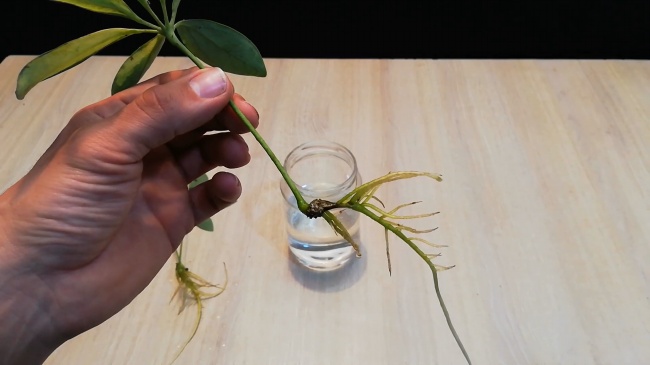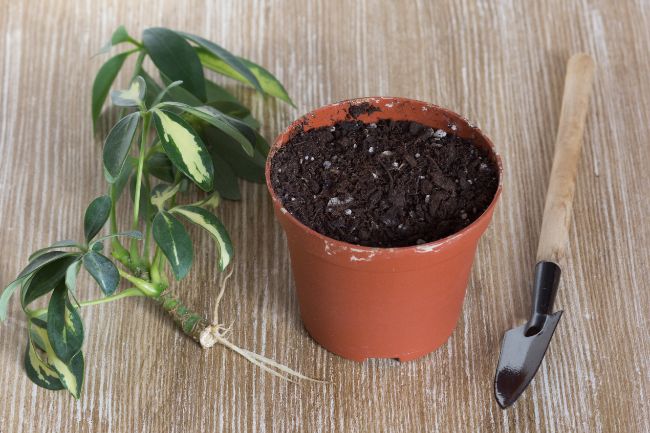The Schefflera Arboricola that belongs to the Araliaceae is a beautiful indoor plant with variegated, hand-shaped leaves with an eye-grabbing look of the stem. The vibrant green foliage looks good indoors but you will miss out on the beautiful bloom of the plant as the plant is said to not have the flowers when grown indoors. There are numerous Schefflera varieties but you can grow all of these varieties and maintain them quite easily at home. If you want to grow more of these plants at home, that can also be done easily by Schefflera propagation.
The plant is also known as the Umbrella plant or the Dwarf Schefflera. When you keep the Schefflera bonsai the average height you can expect is around 30 – 180 cm. The plant belongs to the regions of Taiwan and the South of China. When grown in the natural habitat the plant grows beautiful red flowers. You can grow this plant very easily if you take care of some basic things like soil, temperature, watering sessions, lightning, and optimal usage of fertilizer.
Different ways of Schefflera propagation
Schefflera propagation can be done easily and there are different ways to propagate new Schefflera plants by using the existing plant. Here are some ways to propagate the plant:
1. Propagation by stem Cuttings, Leaves, and Water:
Propagation by using stem cuttings and leaves could be a difficult task as you have to investigate where to cut Schefflera for propagation.

To propagate the umbrella plant take a stem of the mature plant with a growth node that contains leaves in it. Some steps remain the same irrespective of the method you choose. Here are the steps to propagate the plant:
Step 1: You need to prune the stem and for that, you need to have scissors, a knife, or shears. Make sure that you disinfect the tool that you are going to use to cut the part of the plant. The knife works as the best tool and before cutting sterilize the tool with alcohol to avoid infections.
Step 2: Cut a part of the plant which is 4 to 6 inches. Make sure you cut the stem with a leaf node from the tip of the plant. Always make a straight cut to avoid invasion of allergens or pathogens.
Step 3: Prepare good acidic soil with a pH value around 6-6.5. A standard housing plant pot combined with vermiculite makes a good planting soil.
Now there are three different methods by which you can develop roots in your plant:
- The first method is Schefflera propagation in water where you need to put the plant cutting into the water until it develops roots. It may take a while to develop roots and once you observe the roots coming off, plant it in the little pot and let it grow.
- The second method is also easy, just cover the end of the cutting with a paper towel and use a rubber band to tighten up the towel. Make sure you keep it moist until it develops roots and after seeing roots coming, plant it in a small pot in a good acidic, moist soil.
- The last method of Schefflera propagation from leaf and stem cutting involves putting the cutting’s end into the soil mix, covering it from all sides with the soil, and watering it to keep the soil moist.
Step 4: Now, if you have planted it in a pot or container in moist, slightly acidic soil, put it in a place where bright but indirect light is coming. Keep it away from direct sunlight.
Step 5: The plant prospers very well in humidity and you can do it by covering the plant with a plastic bag but make sure that you do not cover it completely as it will retain too much moisture inside. Keep it a little loose to let the air flow inside.
Step 6: Remove the plastic bag daily and remove the dead or decaying cuttings if you see them on your plant. Your plant will start developing roots after a month. Put it in another small container when you see a little growth in your plant.
2. Schefflera Propagation by Sowing:

Growing a full-sized Schefflera plant from seeds may take some time but the chances of growing a plant from seeds are much greater as compared to Schefflera propagation with leaves and stem cuttings. The only major problem here is to find high-quality seeds for sowing. If you have the seeds with you then here are the steps:
Step 1: You need to have a planting tray where you will be going to germinate the seeds and use the light potting soil mix in the tray.
Step 2: To increase the level of germination, you can put the seeds in hot water with a temperature of 60 degrees celsius before sowing into the soil.
Step 3: Plant every seed into the double depth as per the size of the seed and water it lightly to keep the soil moist.
Step 4: Put the tray in indirect sunlight, avoid direct sunlight and maintain a temperature of 24 to 30 degrees Celcius around the seeds.
Step 5: germination may take 2 to 3 months and once the seeds attain a height of 1-2 inches, plant them in individual pots with a good potting soil mix and good growing conditions.
Also read: Fittonia Plant or Nerve Plant: Care, Propagation, & Benefits
3. Propagation by Air Layering:

The air layering method can be a little difficult to try on a new plant but if you see no results by using the stem cutting method, then this procedure could be helpful in propagating a new Schefflera plant. Here’s how you can propagate it by following these steps below:
Step 1: Find an open area of the stem that has a leaf on the upper and lower side. Remove those leaves from that area of the plant stem.
Step 2: Remove the outer layer of the stem until you see the white section of the stem under the bark.
Step 3: Now you need sphagnum moss, a plastic sheet, and rooting hormone powder to treat the wound area. Apply a thin coating of rooting hormone to the wound and wrap the treated area with moist sphagnum moss to make the wound okay.
Step 4: Wrap the sphagnum moss with a plastic sheet covering the top and bottom and secure it by applying tape on both sides and make a humid surrounding for the plant.
Step 5: In about two months’ time span you will notice roots coming in that plastic sheet. Now take that plant and plant it in a small container with favorable conditions.
Common propagation problems
The major hindrance in your plant growth is the soil, so make sure that you keep a check on the soil every time as your stem cuttings are prone to be invaded by fungal issues and pathogens due to moisture. Another thing is to tent your cutting properly as it will provide humidity to your plant which protects the root from rot and your plant keeps on growing without frequent watering sessions. The last thing to keep in mind is that you have to remove the decaying and dead cuttings as it attracts pathogens, remove them as soon as you see them.
However, if you have a question like how do you make a Schefflera bushy? For that, you need to trim the Schefflera plant strategically overtime to make it look denser.
Frequently Asked Questions
Q1: How long do Schefflera plants live?
In excellent condition, they can thrive for decades but when grown as indoor plants they live around 25 years.
Q2: Are Schefflera plants toxic for humans and pets?
Yes, Schefflera plants are highly toxic to pets but mildly toxic for humans.
Q3: Can you propagate Schefflera plants with leaves only?
You need a stem of your Schefflera plant with leaves on it to propagate the plant. You cannot propagate the plant with leaves only.
